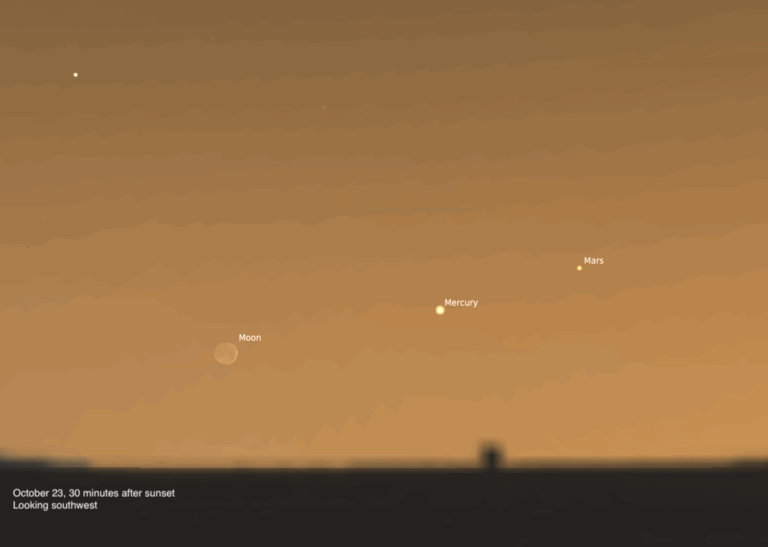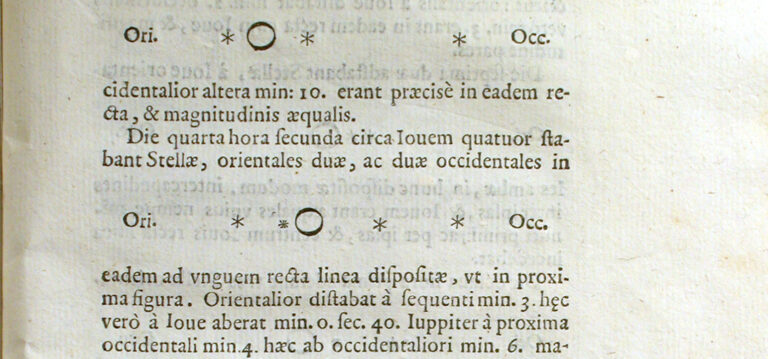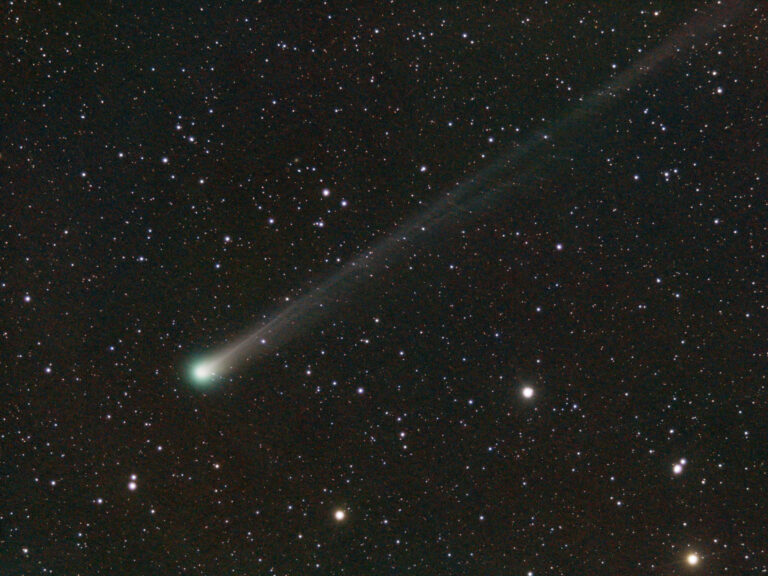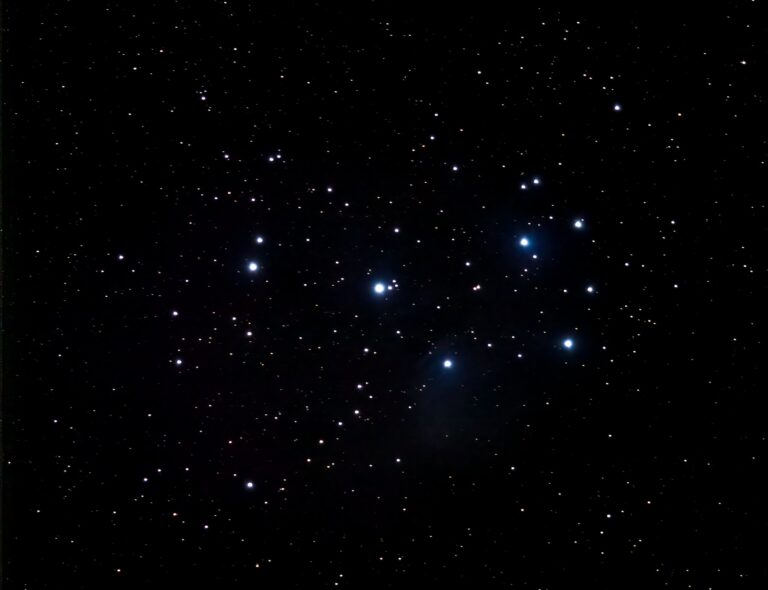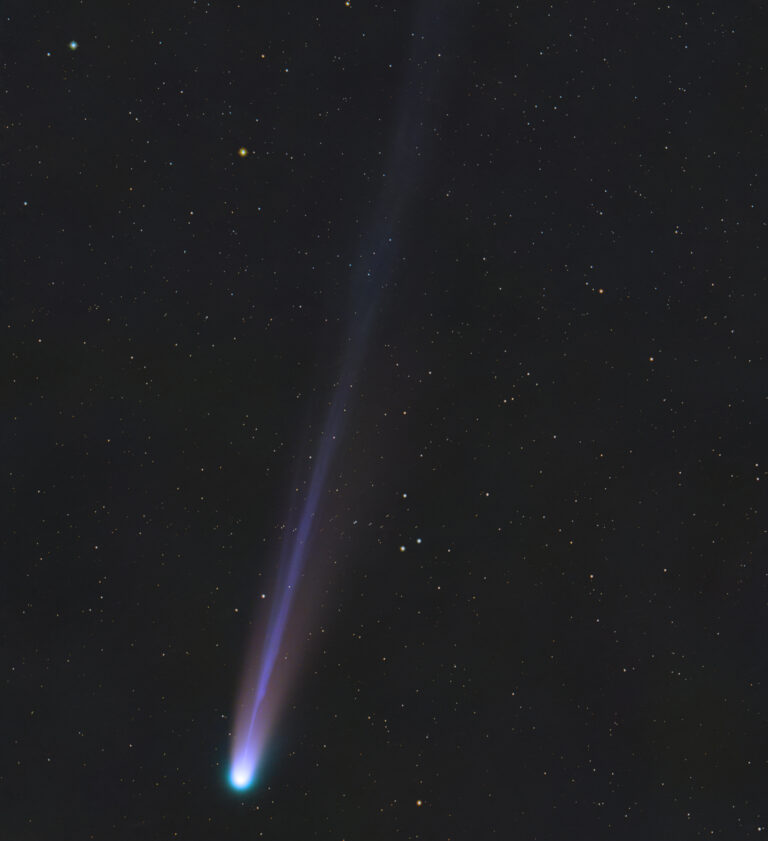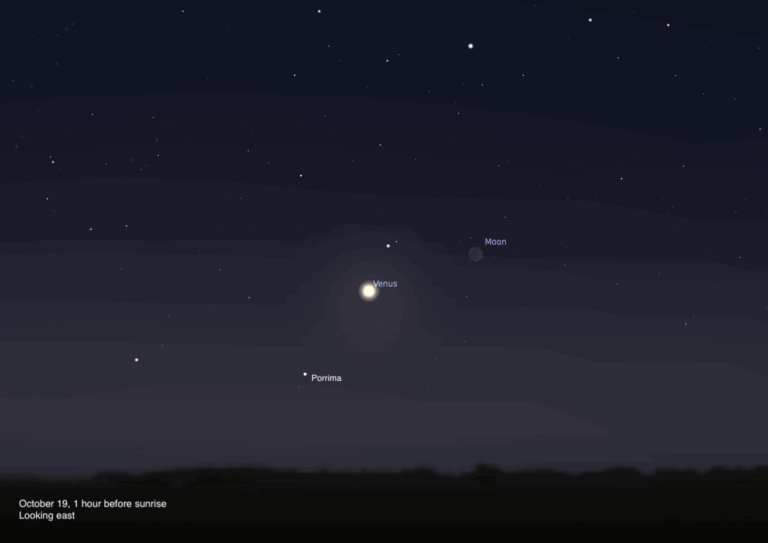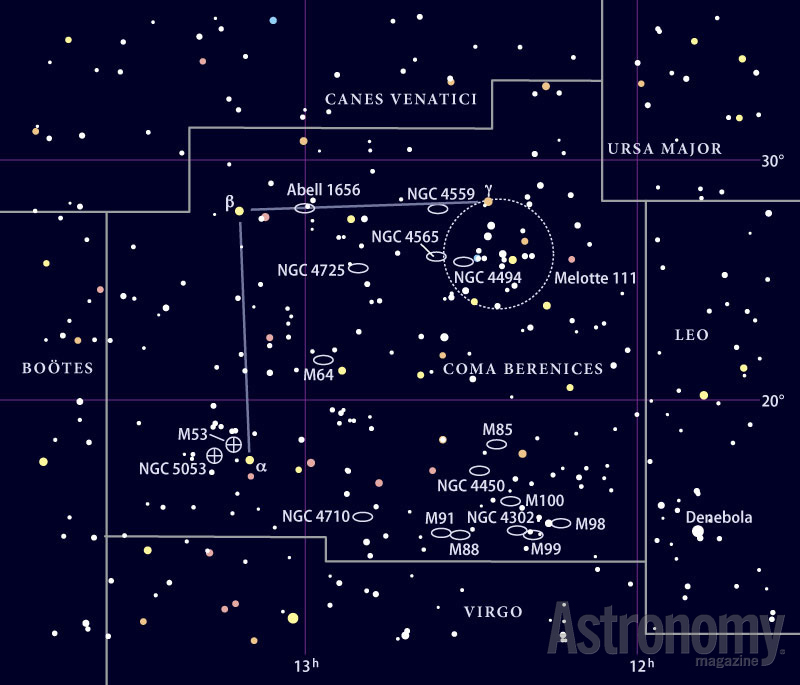
Key Takeaways:
Expand your observing with these online tools from Astronomy magazine
Star Dome
Check out Astronomy.com’s interactive star dome to see an accurate map of your sky. This tool will help you locate this week’s targets.
Observing Talk
After you listen to the podcast and try to find the objects, be sure to share your observing experience with us by leaving a comment at the blog or in the Reader Forums.
Vision test?
This week’s small-telescope target is the double star 24 Comae Berenices. To find it, look 8.3° west of magnitude 4.3 Diadem (Alpha [α] Comae Berenices).
The stars’ brightnesses are fairly close. The primary shines at magnitude 5.2 and the secondary at magnitude 6.7. A 1.5-magnitude difference denotes a fourfold disparity in brightness.
The separation of the pair is 20.3″, wide enough that even a 2-inch telescope will split them cleanly. Use a magnification around 100x.
This binary star is a nice one to use as a test of your eye’s color acuity. What colors do you see? Most observers see yellow and blue, while others see yellow and white or both stars as white. Still others detect an orange and green pair. And your eyes may detect even different hues.
Of course, the color sensitivity of human eyes varies widely, so there’s no right answer. But it’s handy to know how your eyes compare with the majority of amateur astronomers.
A needle you’ll like
This week’s first large-scope object is the Needle Galaxy in Coma Berenices. This wonderful object also goes by the designations NGC 4565 and Caldwell 38.
Point your telescope at the Needle Galaxy, which glows at magnitude 9.6, and you’ll see the sky’s finest edge-on spiral. Don’t confuse the Needle Galaxy with the Silver Needle Galaxy (NGC 4244), which lies 12.5° to the north-northwest. Look for the Needle Galaxy 8.1° west-southwest of magnitude 4.2 Beta (β) Comae Berenices.
Through an 8-inch telescope, you’ll see a streak roughly 10′ long but only 1.5′ thick oriented northwest to southeast. As you increase your scope’s aperture, the apparent length of the Needle Galaxy also increases. A 16-inch scope shows NGC 4565’s full extent. It measures 14.0′ by 1.8′.
A dust lane runs the entire length of this object, masking much of the spiral arms’ brightness. The central region features a small bulge, and that’s the easiest place to detect the dust lane. The dark streak is offset a bit to the north of center because NGC 4565 inclines 3.5° from precisely edge-on.
If your telescope’s aperture is 12 inches or more, try for the magnitude 13.5 galaxy NGC 4562. This faint object lies 13′ southwest of the Needle.
Although we see NGC 4565’s edge, astronomers speculate that a face-on view of the Needle Galaxy would resemble the well-known spiral M100. At its distance of 31 million light-years, NGC 4565 spans more than 150,000 light-years. It resides within the Coma-Sculptor Cloud of galaxies.
Lost and found
This week’s second large-telescope target is the Lost Galaxy, also known as McLeish’s Object and NGC 4535. It’s a barred spiral galaxy that lies in the constellation Virgo the Maiden.
Locate the Lost Galaxy 7.4° west-southwest of magnitude 2.9 Vindemiatrix (Epsilon [e] Virginis). This deep-sky object glows at magnitude 10.0 and measures 7′ by 6.4′.
The Lost Galaxy is a little-known showpiece through large amateur telescopes. Although it’s a barred spiral, the object boasts a large, bright central region. In fact, this area looks rectangular because of the bar. Closer examination at magnifications above 300x reveals two faint spiral arms that emanate from that feature. Oh, and a word of caution: The 13th-magnitude point enmeshed in the northern spiral arm is not a supernova — it’s just a star.
Robert Burnham, Jr., writing in his Celestial Handbook, says that early 20th-century American amateur astronomer Leland S. Copeland called NGC 4535 the Lost Galaxy “from its hazy phantom-like appearance in the amateur telescope.”
“McLeish’s Object” was a name given in honor of astronomer David McLeish, who made a number of discoveries at Cordoba Observatory in Argentina. And, just so you don’t get confused, please note that McLeish’s Interacting Object is a completely different galaxy. McLeish discovered that object, now cataloged as IRAS 20048-6621, in 1948.
Each week, Astronomy magazine Senior Editor Michael E. Bakich, a master at explaining how to observe, posts a podcast about three objects or events you can see in the sky.
Targets for May 26-June 2, 2011
Small-telescope: Double star 24 Comae Berenices
8-inch or larger telescope: The Needle Galaxy
8-inch or larger telescope: The Lost Galaxy


